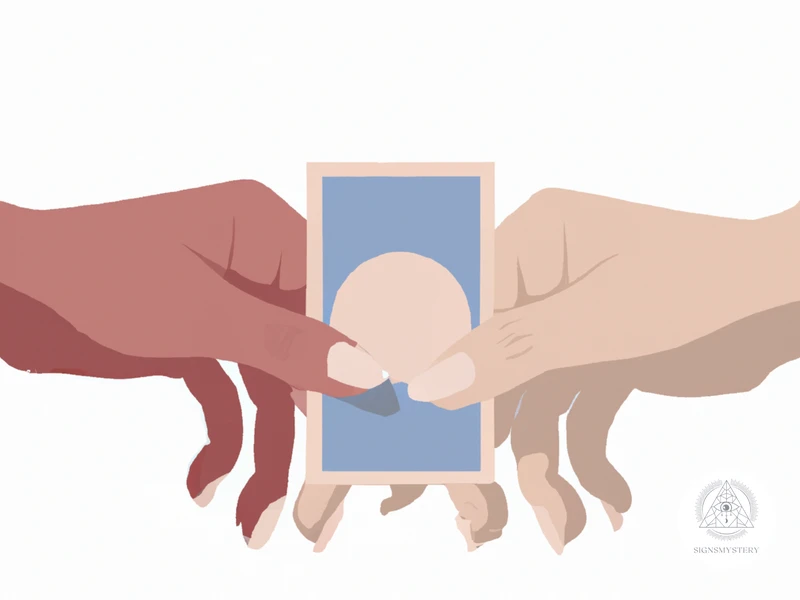Have you ever had a tarot reading with a challenging client? As a tarot reader, it’s important to maintain boundaries in order to have a successful and positive reading experience. However, some clients can test those boundaries, leaving you feeling drained or uncomfortable. That’s why this article focuses on techniques for setting boundaries with challenging clients in tarot readings. By understanding the importance of boundaries and knowing how to identify and handle challenging clients, you can create a safe and productive space for both you and your client. Let’s dive into the world of tarot readings and discover effective strategies for setting boundaries that work for you and your clients.
Understanding Boundaries in Tarot Readings

Understanding boundaries in tarot readings is crucial to creating a safe and respectful space for both the tarot reader and the client. Boundaries are the guidelines you set to determine the limits of what is and isn’t acceptable in the reading. They can encompass a range of areas, such as topics that are off-limits, appropriate behavior during the reading, and confidentiality. Boundaries are essential in helping the tarot reader maintain a sense of control over the reading and creating a space of mutual respect. Without clear boundaries, clients may overstep their bounds and become challenging to work with, causing discomfort and stress for the reader. Understanding the importance of boundaries in tarot readings and how to set them can help you create a more fulfilling and empowering experience for yourself and your clients.
What Are Boundaries?
Boundaries refer to the limits or lines that define the separation between two individuals. They define what is acceptable and unacceptable behavior from others towards oneself. In tarot readings, it is crucial to establish consent and clear boundaries since they define the scope and limits of the session. These boundaries can be physical, emotional, and cultural.
Physical boundaries refer to the space between the reader and the client, while emotional boundaries define the kind of emotions that are considered appropriate between the two parties during a reading. Cultural boundaries, on the other hand, relate to the traditions, norms, and beliefs of the client that need to be respected during the session. As a tarot reader, having a clear understanding of your own boundaries and those of your clients is critical for a successful reading.
Having healthy boundaries in tarot readings ensures that the interaction between the two parties is respectful and compliant with ethical standards. This helps to create a safe environment, where both the reader and the client feel comfortable and free to express themselves. Boundaries also establish mutual trust and respect between the two parties, which is essential in creating a positive experience for everyone involved. In the next section, we will discuss why boundaries are crucial in tarot readings.
Why Are Boundaries Important in Tarot Readings?
Boundaries in tarot readings are essential for creating a safe and respectful environment for both the reader and client. There are a variety of reasons why boundaries are important in tarot readings. Firstly, it helps the reader to maintain control over the reading and guide it in a way that aligns with their own values and beliefs. Secondly, it ensures that the client is aware of the limitations of the reading and understands what they can and cannot expect from it.
Creating boundaries can help to prevent the reader from feeling drained or overwhelmed by the experience. A reader who is constantly giving more than they are comfortable with, may feel exhausted or even begin to experience burnout. By setting boundaries, the reader can ensure that they are able to deliver readings that are authentic and meaningful, without sacrificing their own well-being.
Boundaries are also important for ensuring a culturally sensitive reading experience. Some cultures have specific beliefs and practices related to tarot readings, and it is important for the reader to be aware of and sensitive to these cultural boundaries. Additionally, boundaries can be crucial in preventing inappropriate or uncomfortable personal questions from being asked during a reading.
Ultimately, creating boundaries is essential for ensuring that the reader and client have a positive and empowering tarot reading experience. By establishing clear intentions, communication, and expectations, both parties can truly benefit from the insights that a tarot reading can provide. For more information on how to set boundaries in tarot readings, refer to the tarot boundaries spreads article.
Identifying Challenging Clients
Identifying challenging clients is an essential part of being a tarot reader. It’s important to recognize that not all clients will be a good fit for your reading style and that some may be more difficult to work with than others. Types of challenging clients may include those who are skeptical, argumentative, or have unrealistic expectations. Other challenging clients may be those who ask inappropriate questions or who are insensitive to cultural boundaries. It’s important for tarot readers to be able to identify these clients and to develop strategies for working with them or declining to work with them altogether. Recognizing why a client is challenging can help tarot readers approach the situation with more empathy and understanding.
Types of Challenging Clients
1. The Skeptic: This type of client is skeptical about the validity and accuracy of tarot readings. They may question the authenticity of the reader or the cards used. It is important to establish clear communication and express empathy to build trust and help the client feel comfortable during the reading.
2. The Demanding Client: This type of client may have high expectations and unrealistic demands for the reading. They may want specific answers or predictions instead of the guidance and insight that tarot readings provide. It is important to define expectations and limitations beforehand and manage the client’s expectations throughout the reading.
3. The Over-Sharer: This type of client may share personal information or inappropriate details about their life that can make the reader uncomfortable or make the reading challenging. It is important to redirect the conversation back to the cards and maintain boundaries in a respectful manner.
4. The Closed-Off Client: This type of client may be resistant to the reading or have a closed-off demeanor that may make it difficult to establish rapport or connect with them. It is important to stay calm and centered and try to offer guidance that can help open them up.
5. The Sensitive Client: This type of client may be emotionally sensitive or triggered by certain topics or aspects of the reading. It is important to be mindful of their sensitivity and approach the reading with empathy and care. In some cases, it may be necessary to end the reading prematurely.
Identifying and managing challenging clients is an important skill for tarot readers to develop. By understanding the different types of challenging clients and implementing techniques for setting boundaries, readers can create a safe and comfortable space for all clients to receive guidance and insight from their readings. For more information about boundaries in tarot readings, check out our article on tarot cultural boundaries.
What Makes a Client Challenging?
Clients are said to be challenging when they display certain behaviors or characteristics that disrupt the flow of the tarot reading. These challenging clients can make the tarot reading uncomfortable, unproductive or even confrontational.
One of the most common characteristics of a challenging client is an individual who is either skeptical or has a negative attitude towards tarot readings. They may come to the reading with a closed mind and refuse to participate in the process, which can make it difficult for the tarot reader to connect with them through the cards. Another type of challenging client is someone who is overly dependent on the tarot reader for advice or validation, rather than using their own intuition to make decisions. This can put pressure on the tarot reader to give specific answers or predictions, which is not what tarot readings are about.
In some cases, a client may ask inappropriate or offensive questions that are unrelated to the reading. Tarot readers should know how to handle these situations professionally and redirect the client back to the topic at hand. Clients who are excessively emotional or sensitive may also present a challenge. It can be difficult to guide the reading while also being empathetic to their feelings.
Lastly, there may be clients who expect the tarot reader to have a magical solution for all their problems or who do not respect boundaries. These clients may ask for repeated readings, hold the tarot reader to unrealistic expectations, or refuse to pay for their services. It’s important for tarot readers to recognize these behaviors and set firm boundaries for how they want to be treated during a reading.
In some cases, challenging clients may be close friends or family members of the tarot reader. This can create unique challenges, as boundaries can blur in personal relationships. For more information on boundaries in tarot readings with friends and family, see our article on ethical tarot readings with friends and family.
Techniques for Setting Boundaries in Tarot Readings

When giving a tarot reading, it’s crucial to establish clear boundaries with the client. Setting intentions before the reading can help you and the client focus on the purpose of the reading. This allows for a more productive and meaningful experience. Establishing clear communication from the beginning is also vital. Make sure you both agree on any specific topics or questions that are off-limits. Defining expectations and limitations of what you can offer in the reading can also prevent misunderstandings. It’s essential to know when to say no, especially when the client is asking inappropriate questions that cross ethical boundaries (/tarot-inappropriate-questions/). Using tarot spreads can steer the reading toward a specific focus and offer guidance. Lastly, focusing on empowerment and self-care can help both you and the client feel more at ease during the reading and create a positive experience, especially for those clients who may be sensitive to certain topics or experiences (/tarot-sensitivity/).
1. Set Intentions Before the Reading
Setting intentions is an important step before any tarot reading. This involves taking some time to reflect on your desired outcome for the reading. As a tarot reader, having a clear intention can help you stay focused during the reading and guide the client towards a specific goal or message. Some examples of intentions could be to gain insight into a specific situation, receive guidance on a decision, or gain clarity on emotions or feelings.
To set intentions, take a few deep breaths and meditate on your desired outcome. You can also write down your intention on a piece of paper or use a specific tarot spread to help clarify your intention. By taking this step, you are setting a positive tone for the reading and helping the client feel more comfortable and engaged in the process.
It’s important to remember that intentions can change and evolve as the reading progresses. As a tarot reader, be open to adjusting your approach based on the client’s energy and reactions during the reading. Trust your intuition and let the cards guide you towards the best possible outcome for the client.
In addition to setting intentions, creating a calm and inviting environment can also help your clients feel more relaxed and open to the reading. This can be achieved through the use of candles, incense, or calming music. By taking the time to set intentions and create a comfortable environment, you are setting the stage for a successful and fulfilling tarot reading experience.
2. Establish Clear Communication
Establishing clear communication is key when it comes to setting boundaries with challenging clients in tarot readings. Communication involves not only the words we use, but also our tone, body language, and energy. Being clear and direct with clients from the outset is essential. It is important to clarify what is expected of both parties and ensure that the client understands the boundaries that have been set.
Active listening is an important part of establishing clear communication. It is essential to listen carefully to the client’s concerns and questions and respond in a thoughtful manner. If they express a desire for something that goes against the boundaries you have set, it is important to reiterate the boundaries and explain why they are in place.
Another technique for establishing clear communication is to use “I” statements. For example, instead of saying “you can’t do that,” it is more effective to say “I am not comfortable with that.” This puts the focus on your own boundaries and feelings, rather than making the client feel attacked or judged.
Non-verbal communication is also important in establishing clear communication. This includes maintaining eye contact, using open body language, and being aware of your tone. By adopting a calm and confident tone, you can convey your authority while also being empathetic and supportive.
It is important to establish clear boundaries around communication outside of the reading. This includes setting expectations around follow-up communication and reiterating the importance of respecting your time and privacy.
Establishing clear communication is a crucial aspect of setting boundaries with challenging clients in tarot readings. It involves active listening, using “I” statements, being aware of non-verbal communication, and setting clear boundaries around communication outside of the reading. By taking these steps, you can ensure that your clients understand your boundaries and respect them, ultimately creating a more positive and productive reading experience for both parties.
3. Define Expectations and Limitations
Defining expectations and limitations is a crucial step in setting boundaries with challenging clients during tarot readings. This involves clarifying what the client can expect from the reading and what is not within the scope of the session. It’s important to be clear and assertive so that the client understands what they can and cannot ask for.
One effective technique is to outline the specific areas that the reading will cover. For example, you might say, “During this session, we will focus on gaining insight into your current situation and exploring potential paths forward. However, I am not able to provide legal or medical advice.” This helps to manage the client’s expectations and prevents them from expecting more than what you can offer.
It’s also important to clarify any limitations that may come up during the reading. For instance, you may not be able to answer yes or no questions or provide specific timelines. By being upfront about these limitations, you can avoid misunderstandings and set the stage for a smoother reading.
Another aspect of defining expectations and limitations is establishing boundaries around the client’s behavior. For example, you might say, “During this session, I expect that we will treat each other with respect and maintain a non-judgmental attitude.” This sets the tone for a positive and productive reading, while also establishing your own standards for how you expect to be treated.
Defining expectations and limitations is a powerful way to establish boundaries during tarot readings. By being clear and assertive, you can help clients understand what to expect from the session and what is and isn’t within the scope of the reading. This can help prevent misunderstandings and lead to a more positive and empowering experience for everyone involved.
4. Know When to Say No
As a Tarot reader, it is important to recognize when a client’s request or behavior is beyond the scope of what you are comfortable with. Knowing when to say no is a critical aspect of setting boundaries in Tarot readings. It can be a challenging decision, but ultimately, you need to prioritize your own well-being and ethical standards.
Before saying no, take a moment to reflect on what is making you uncomfortable. Is it the client’s request, their behavior, or are there other factors at play? Knowing the root cause of your discomfort can help you determine whether the situation is one that can be resolved through communication, or if it requires you to say no.
When saying no, be clear, concise, and respectful. Explain that you are not comfortable with their request or behavior and that it goes against your ethical boundaries as a Tarot reader. It is important to remember that saying no is not a personal attack against the client, but rather a decision made in the best interest of both yourself and the client.
Offer alternatives to the client if possible. For example, if the client is asking for a reading on a topic that you do not feel comfortable with, suggest a different reading topic that aligns more with your expertise and comfort level. If the client’s behavior is disruptive or inappropriate, suggest a break or pause in the session to allow the client to collect themselves.
Stick to your decision even if the client continues to press the issue. It can be tempting to give in to a client’s persistence, but compromising your boundaries could ultimately harm the client, yourself, and the integrity of your Tarot practice.
Remember, setting boundaries with challenging clients is not about rejecting the client or their feelings, but rather about creating a safe and respectful environment for both yourself and the client. Saying no can be uncomfortable, but it is an important part of establishing and maintaining boundaries in Tarot readings.
5. Use Tarot Spreads to Guide the Reading
One effective technique for setting boundaries in tarot readings is to use tarot spreads to guide the reading. A tarot spread is a predetermined arrangement of tarot cards that serve as a framework for the reading. By using a tarot spread, you can focus the reading on specific topics or themes and ensure that the client understands the scope and
Subscribe to Our Newsletter
Sign up to receive the latest news and updates.
There are numerous tarot spreads to choose from, each with their own unique benefits. For example, the Celtic Cross spread is a popular spread that provides a comprehensive look at a situation or question. The three-card spread is a quick and simple spread that can be used for basic questions or to gain insight into the past, present, and future. The relationship spread is designed to provide insight into the dynamics between two people, while the chakra spread is focused on energizing and balancing the chakras.
Before the reading, take some time to select a spread that is appropriate for the client’s needs and goals. Then, explain the spread and its purpose to the client before shuffling the deck and laying out the cards. This will help minimize any confusion or misunderstanding and allow the reading to proceed smoothly.
Using tarot spreads can also help you set boundaries by providing structure to the reading. You can use the spread to guide the client’s questions or prevent them from straying into areas that are outside the scope of the reading. For example, if a client starts asking about their business, but the reading is focused on their personal life, you can gently redirect them back to the topic at hand by referring to the spread and its purpose.
Incorporating tarot spreads into your tarot readings can provide a clear framework for the reading and help you set boundaries with challenging clients. By using spreads to guide the reading, you can ensure that both you and the client are on the same page and working towards a common goal.
6. Focus on Empowerment and Self-Care
6. Focus on Empowerment and Self-Care
One effective way to set boundaries with challenging clients in tarot readings is to direct the focus of the reading towards empowerment and self-care. This approach can help shift the client’s energy towards positive and constructive ideas while also establishing a framework for the reading that is centered around the client’s well-being.
To focus on empowerment and self-care, you can use a variety of techniques, such as:
- Encourage Self-Reflection: Encourage the client to reflect on their own thoughts and feelings. Ask open-ended questions such as “How do you feel about that?” or “What do you think might be causing that?” to encourage self-reflection and introspection. This approach can help the client gain insight into their own patterns of behavior and thought, which can then be used to initiate positive change.
- Highlight Positive Aspects: Rather than focusing on negative aspects of the client’s situation, focus on positive elements instead. Encourage the client to see the potential for growth and improvement in their current situation. Help the client identify their strengths and positive qualities, and guide them towards a greater sense of self-worth and confidence.
- Suggest Self-Care Techniques: Recommend self-care techniques such as meditation, journaling, or exercise. Suggest ways in which the client can incorporate healthier habits into their daily life in order to promote self-care and positive self-esteem.
Focusing on empowerment and self-care can help establish a positive and productive mindset for the client, while also creating a clear framework for the reading that emphasizes the client’s well-being. By helping the client feel empowered and capable of positive change, you can set the stage for a successful and meaningful tarot reading.
Dealing with Difficult Clients
When it comes to dealing with difficult clients during tarot readings, it’s important to stay calm and centered. Upholding boundaries is key, and sometimes this means redirecting negative energy or expressing empathy and understanding. It’s okay to say “no” to a client who is not respecting your boundaries or making you uncomfortable. Additionally, ending the reading gracefully (perhaps with a simple and respectful closing statement) can help deescalate any tension. Remember that you are in control of the tarot reading, and prioritizing your own well-being and safety is important.
1. Stay Calm and Centered
When dealing with difficult clients, it’s important to stay calm and centered throughout the tarot reading. This can help you maintain control of the session and avoid becoming overwhelmed by the client’s energy. Here are some techniques to help you stay centered during a challenging tarot reading:
| Breathing exercises | Take a moment to focus on your breath. Inhale deeply and exhale slowly, while counting to four on each inhale and exhale. This can help slow your heart rate and calm your mind. |
| Affirmations | Use positive affirmations to help center your thoughts. Repeat a calming phrase, like “I am in control of this session” or “I am grounded and centered.” |
| Physical grounding | Engage your senses to focus on your physical surroundings. Feel the ground beneath your feet, the chair you’re sitting in, or the cards in your hands. This can help you feel more present and in control. |
| Taking breaks | If you’re feeling overwhelmed, it’s okay to take a break. Excuse yourself for a moment to take a deep breath, regroup, and come back to the session when you’re feeling more centered. |
Remember, staying calm and centered is key to maintaining your focus and providing an effective tarot reading, even with challenging clients.
2. Redirect Negative Energy
2. Redirect Negative Energy
When dealing with challenging clients, it’s important to redirect any negative energy in the reading. This can help to diffuse tense situations and prevent the client from becoming more agitated. Here are some techniques for redirecting negative energy in tarot readings:
– Acknowledge the client’s feelings: Show empathy and understanding towards the client’s emotions. Let them know that their feelings are valid and that you are there to support them. For example, you might say something like, “It sounds like you’re feeling really frustrated right now. I can understand why this situation would be upsetting.”
– Reframe negative statements: If the client makes a negative comment about themselves, try reframing it in a more positive light. Help them to see the situation from a different perspective. For example, if a client says, “I always mess things up,” you might say, “It sounds like you’re really hard on yourself. Let’s focus on what steps you can take to move forward.”
– Focus on solutions: Instead of dwelling on negative aspects of the situation, try to focus on solutions. Help the client to identify actionable steps they can take to improve their situation. For example, you might say, “Let’s look at some options for moving forward. What are some changes you can make to improve this situation?”
– Use grounding techniques: If the client is feeling overwhelmed or anxious, try using grounding techniques to help them feel more centered. This might include deep breathing exercises, visualization, or progressive muscle relaxation. Encourage the client to take a few deep breaths and release any tension in their body.
Redirecting negative energy in tarot readings can be challenging, but it’s an essential skill for working with challenging clients. Remember to stay calm and centered, and to focus on solutions and positive outcomes. By using these techniques, you can help your clients to feel more empowered and in control of their situation.
3. Express Empathy and Understanding
When dealing with challenging clients in tarot readings, expressing empathy and understanding can go a long way in defusing difficult situations. It’s important to remember that clients who are difficult or confrontational are often going through their own struggles, and may be projecting their emotions onto the reader. By showing empathy and understanding, you can help to create a safe and supportive space for the client.
One way to express empathy and understanding is to use validating language. This means acknowledging the client’s feelings and experiences, even if you don’t necessarily agree with their perspective. For example, if a client is angry or upset, you might say something like, “I can understand how frustrating that must be for you,” or “I’m sorry that you’re going through this.” Using validating language can help to de-escalate the client’s emotions and show that you are listening and attempting to understand their point of view.
Another way to express empathy and understanding is to practice active listening. This means giving your full attention to the client, and reflecting back what you hear them saying. To do this, you might repeat back a key phrase or summarize what the client has shared with you. By actively listening, you can show the client that you are fully present with them, and that their perspective is important to you.
Finally, expressing empathy and understanding can also involve setting boundaries. If a client is being confrontational or aggressive, it may be necessary to let them know that their behavior is not acceptable. However, this can be done in a compassionate way that still shows empathy and understanding. For example, you might say something like, “I understand that you are feeling upset, but it’s not okay to speak to me in that way. If we can’t communicate respectfully, I’m going to have to end the reading.” By setting a clear boundary, you can help the client to understand that their behavior has consequences, while still showing empathy and understanding for their emotions.
4. End the Reading Gracefully
Ending a tarot reading with a challenging client can be a delicate task, but it’s important to do so gracefully. Here are some tips for wrapping up the session:
| Tips for Ending the Reading Gracefully |
|---|
| 1. Summarize the Reading |
| Before concluding the reading, take a moment to summarize the main points and insights that emerged during the session. This can help the client gain a clearer understanding of what was discussed and provide a sense of closure. |
| 2. Offer Positive Affirmations |
| Even if the reading was challenging, it’s important to leave the client feeling positive and empowered. Offer words of encouragement and remind them of their strengths and capabilities. |
| 3. Provide Resources |
| If appropriate, provide the client with additional resources such as book recommendations, websites, or suggested practices to help them continue to explore the themes that emerged during the reading. |
| 4. Thank the Client |
| Show gratitude to the client for their willingness to explore their challenges and seek guidance. Even if the reading was difficult, acknowledge their effort and appreciate their presence. |
| 5. Close with a Positive Message |
| End the session with a positive message or blessing that leaves the client feeling uplifted and inspired. This can be a powerful way to solidify the insights gained during the reading and set a positive tone for future growth. |
Remember, ending a challenging reading gracefully can be a powerful way to build trust with the client and help them feel supported on their journey. By following these tips, you can create a space of compassion, understanding, and empowerment that can benefit both you and your client.
Conclusion
In conclusion, setting boundaries with challenging clients in tarot readings is essential for maintaining a positive and empowering experience for all parties involved. While it can be difficult to navigate challenging clients, by utilizing the techniques outlined in this article, you can establish clear boundaries and foster a safe and respectful environment for your readings.
Remember to always prioritize your own well-being and self-care, and never hesitate to say no or end a reading gracefully if necessary. By setting intentions, establishing clear communication, defining expectations, and focusing on empowerment, you can overcome challenging situations and provide meaningful and impactful readings.
Ultimately, building trust and respect with your clients is a two-way street, and by showing empathy and understanding even in difficult situations, you can deepen your connection and create a more fulfilling and rewarding experience for all involved. So, embrace the challenges, stay centered and focused, and let the tarot guide you towards meaningful and transformative experiences.
Frequently Asked Questions
1. Can’t I just ignore my challenging clients?
Ignoring clients is not a professional solution. Every client deserves your attention and respect, regardless of their behavior.
2. Why do I need boundaries in tarot readings?
Boundaries are important to create a safe and healthy environment for you and your clients. They help you establish clear expectations and limitations, and maintain a professional relationship.
3. How can I identify challenging clients?
Challenging clients may exhibit behavior such as being argumentative, dismissive of your advice, overly emotional, or difficult to connect with. Look for patterns in their behavior to identify them.
4. Is it okay to refuse a reading for a challenging client?
If a client is making you uncomfortable or their behavior is inappropriate, it’s okay to refuse a reading. It’s important to prioritize your safety and well-being.
5. What should I do if a client keeps pushing my boundaries?
If a client keeps pushing your boundaries, it’s important to firmly and respectfully communicate your limits. You may need to cut the session short or end it altogether if the behavior continues.
6. How can I prevent burnout when dealing with challenging clients?
Self-care is crucial when dealing with challenging clients. Take breaks, practice mindfulness, and seek support from other professionals or loved ones if needed.
7. What’s the best way to establish clear communication with clients?
Clear communication can be established by setting expectations, listening actively, and repeating back what the client has said to ensure understanding.
8. Should I use tarot spreads to guide the reading?
Tarot spreads can be a useful tool to structure the reading and provide a clear direction for both you and the client. However, it’s important to remain flexible and adapt as needed.
9. Can I use humor to diffuse a difficult situation?
Humor can be an effective way to ease tension, but it’s important to use it carefully and appropriately. Make sure it doesn’t minimize the client’s concerns or distract from their needs.
10. What should I do if a client becomes angry or threatening?
If a client becomes angry or threatening, prioritize your safety and well-being. End the session immediately, and seek support from other professionals or authorities if necessary.










